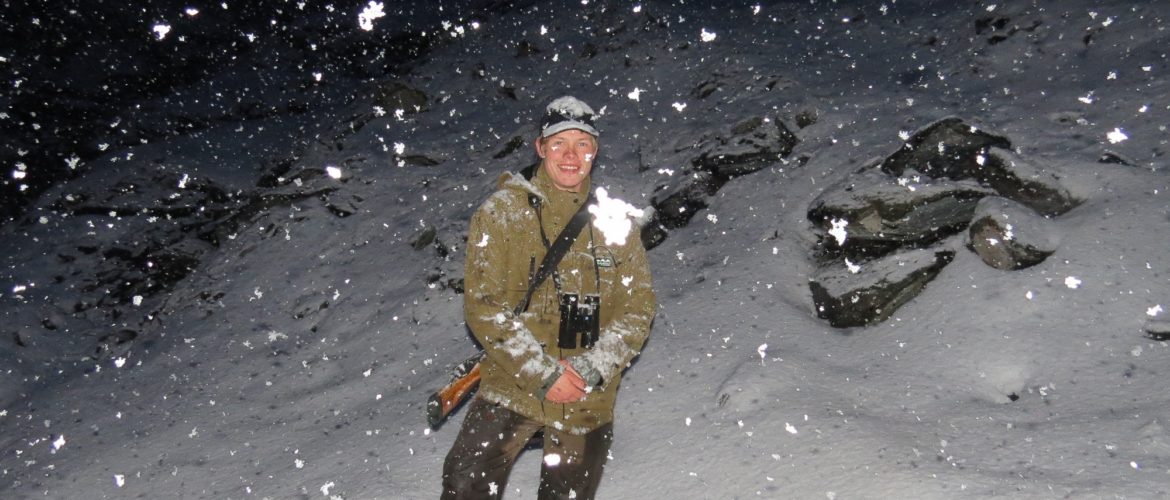$0.00
No products in the cart.

Article 1: Walking in the dark wild deer print
This is the beginning of a series of short, punchy, factual articles sharing the knowledge I have learned from hunting in the New Zealand mountains over the last 20 years, 13 of those years as a professional hunter.
Walking in the dark:
If I was to name the one thing that I utilised the most as a tool for successful hunting, walking in the dark would be it.
Why use this tip?
Walking in the dark applies to both morning and evening hunting it allows you to arrive at your targeted area at your ‘optimum time’ in the morning or it allows you to stay at your ‘targeted area’ until optimum time in the evening. Whether your target area is a three hour walk from camp or a half hour walk it allows you to hunt all of your optimum time therefore expanding your chances of success. The biggest mistake commonly made by hunters in the mountains is that they are moving to or heading back from their targeted hunting area at optimum hunting times.
How to use this tip / gear needed for this tip:
Using this tip requires three main pieces of essential hunting kit: headlamp, GPS and a topographical map, if the map is in the GPS, great. A headlamp as opposed to a torch allows for hands free walking and climbing, it also allows you to hold your GPS. Once you have defined your targeted area you can plot a course on how to get there with your map and more importantly plot a course to get you there at optimum time. The more knowledge you have of how to reach your targeted area and how to get home from it, the more time you can actually spend hunting it. Mark relevant points on your GPS from your map or do a reccy during the day for a first hand account of the terrain.
Mark points on your GPS that you know you will find difficult in the dark e.g. bluffs, tricky terrain, river crossings (yes it’s possible to cross rivers in the dark especially if you have done your day time reccy), further hazards you encountered on your reccy or can observe from your map. Also mark ‘comfort points,’ on your GPS. Areas or landmarks on your course you can identify with and feel comfortable. Use these comfort points to take a short rest and to confirm a perception of where you are from other factors such as moonlight, stars, and identifiable features in your headlight. Remember you are walking in the dark, a little beep from your GPS every so often to let you know you’re on track is a nice comfort and to be able to confirm that beep with a landmark in your headlamp is even better.
Hunt scenario:
You have glassed an animal above bush line, in the evening, in the head of a side creek while hunting the day before. The side creek is on the same side of the river as your camp, which is always a big plus as you won’t be getting wet. To the best of your ability with the optics you have you have decided this animal is worth targeting. The animal is rutting and it is highly likely to be in the same area in the morning. Great, you already know a lot, now you need to execute your approach to your target area to the best of your ability.
From hunting the main valley the day before you know it’s roughly 45 minutes from camp to where the side creek meets the main valley. You didn’t have time to reccy the side creek because you’re target area (where you spotted the animal) was only located one hour before dark, that’s hunting! You did study the side creek with your binoculars and work out the most likely way up, you then cross referenced this information with your map back at camp. The main river valley is rock filled but not bad walking, you have to cut into the bush at one point to climb around a bluff that protrudes out into the river so you mark an entry and exit point to the bush on your GPS. You mark a comfort point halfway from camp to the mouth of the side creek you are going to climb.
Back at camp after you’re evening meal, you have your gear prepared for the morning but there is one question left to answer, ‘what time to set the alarm for?’ It’s roughly an hour up the main valley and a predicted two hour climb to your target area. Daybreak is 7.30 am; you decide 8.00 am is the start of ‘optimum time’ when you want to be in your ‘target area.’ Add half an hour for breakfast / getting ready and the alarm is set for 4.30 am, yes it’s early but how badly do you want an opportunity at this animal???
Next issue: ‘Base camp hunting vs fly camp (spike camp) hunting.’
Key words:
Targeted area or target area: A promising area you want to hunt or an actual area where you have identified your target animal.
Optimum time: Morning period and evening period where animals are most visible and active. Comfort points: GPS points you have marked that you can identify with in the dark.